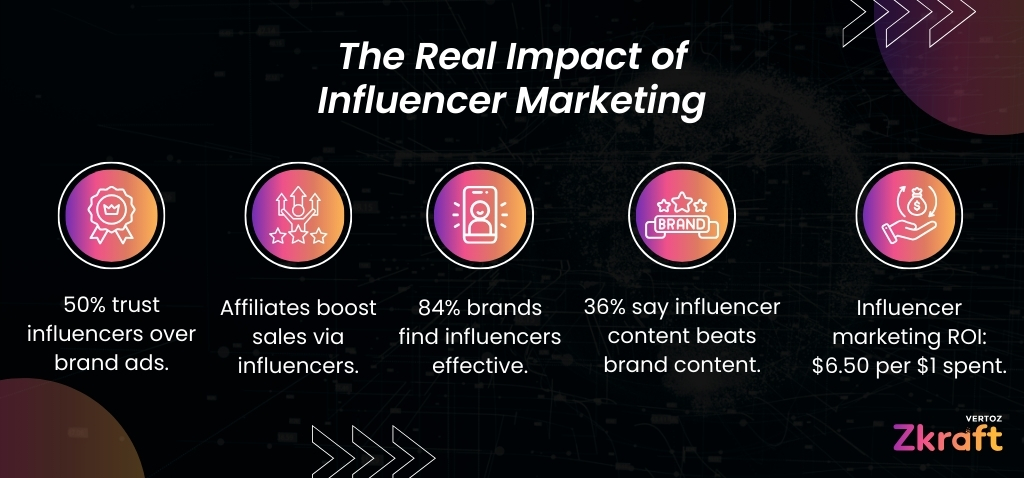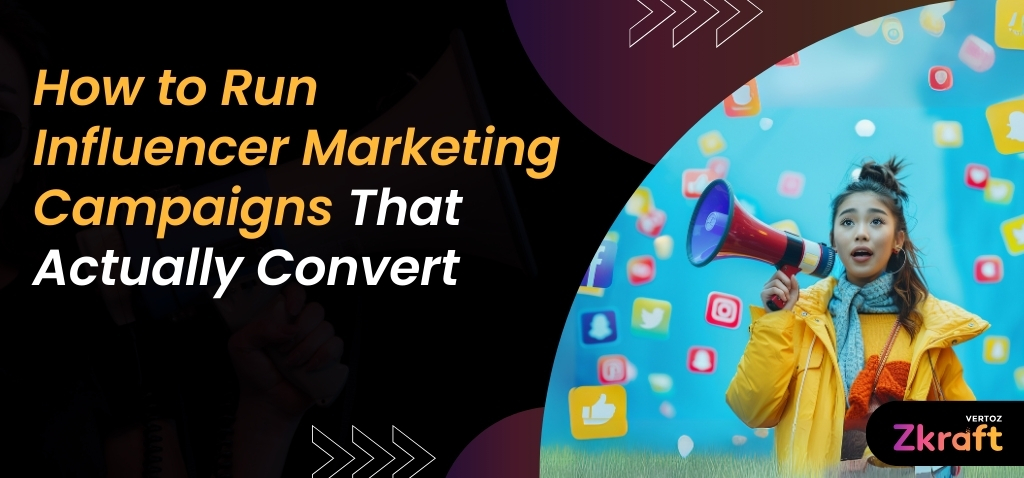With how addicted everyone is to their phones and social media these days, it’s natural to have lost track of time while scrolling through reels multiple times a day. There’s something so oddly fascinating about how a 30 to 40-second video has the power to quietly drive hundreds, sometimes even thousands of purchases. But again, this isn’t the case with every reel, every influencer, or every campaign.
The problem isn’t influencers, but it’s how brands work with them. Influencer marketing has grown so much in recent times, and it’s only going to get bigger. Brands don’t invest in influencer marketing for likes or views or shares, but for conversions. They care about results and sales, and these conversions don’t just come from follower counts. It needs proper strategy, planning, and placement.
At Zkraft, we’ve seen this shift play out across campaigns we’ve strategized. Whether it’s working with niche creators for high-intent audiences or refining content hooks that don’t sound like ad scripts, the focus has always been the same: to get consumers to actually act.
So how do you run influencer campaigns that don’t just trend but convert? Let’s break it down.

Always start with the audience
It’s natural for brands to fall for polished content and massive fan following, but it doesn’t always work its way. Before reaching out to the influencers, it’s important to understand your audience and whom they trust. You don’t always need macro-influencers with a million followers, but micro or even nano creators whose audiences trust them. As per studies, half of millennials trust product recommendations from influencers, while only 38% place the same trust in recommendations from celebrities.
That difference in trust? That’s your margin of conversion.
Pick creators who already align with you
It can be tempting to pick a popular face, but as mentioned, that’s not the only thing that matters in influencer marketing. They should align with what your brand stands for. For example, if you’re a skincare or makeup brand, collaborate with skincare experts or even lifestyle influencers that fit your niche. They’re more likely to come across as authentic because their audience already expects that type of recommendation from them. Another tip: try and not work with someone who’s collaborated with your competitor some time back, because that can hamper the image.
Zkraft’s influencer network taps into this very philosophy, as we don’t match brands with creators by follower count but by intent and relevance.
Co-create, don’t control
This is where brands tend to go wrong a little. They script everything, right from outfits to exact phrases, which makes it “not so authentic.” That’s not how influencer marketing works. Creators know their audience; it’s better to provide them clear guidelines and goals and then let them translate that into their own voice. You’ll be surprised how much better the content performs when it doesn’t feel forced.
The same approach is what Zkraft helps brands adopt, as we act as a translator between brand objectives and creator authenticity, so both sides win.
Focus on Mid-Funnel Metrics
It’s the clicks, saves, DMs, and swipe-ups that make a lot of difference in the way that the audience is perceiving the influencer content. If you only measure conversions, then you will most likely miss the full impact of the campaign. Use UTM parameters, unique discount codes, affiliate links, and shoppable stories. Platforms like Instagram and TikTok now offer built-in shopping tools, so you can make use of them as well.
Conversions often happen after three or more exposures to a product. Track behavior over a period, not just a weekend campaign.
Don’t Treat It As a One-Off
The best influencer marketing doesn’t come from one-off sponsored posts. It comes from building long-term relationships where influencers genuinely become brand advocates. When creators talk about your product across time, before, during, and after a campaign, it builds familiarity.
Even a simple retargeting strategy using influencer video views can bring people back when they’re ready to act.
So next time you’re lining up your campaign, don’t chase impressions. Build intention. Because conversions aren’t earned by shouting louder, but they’re earned by speaking smarter.

